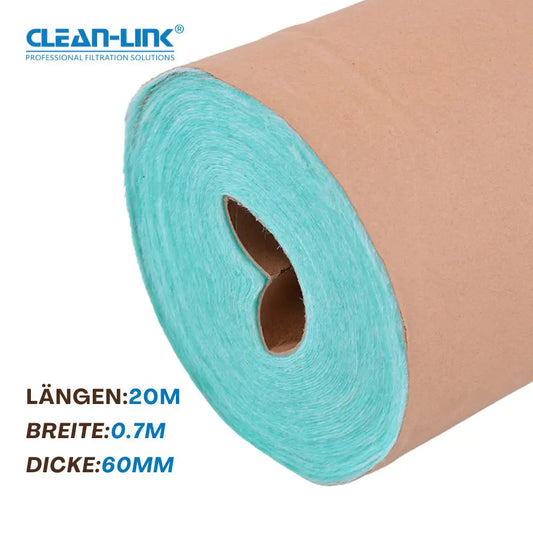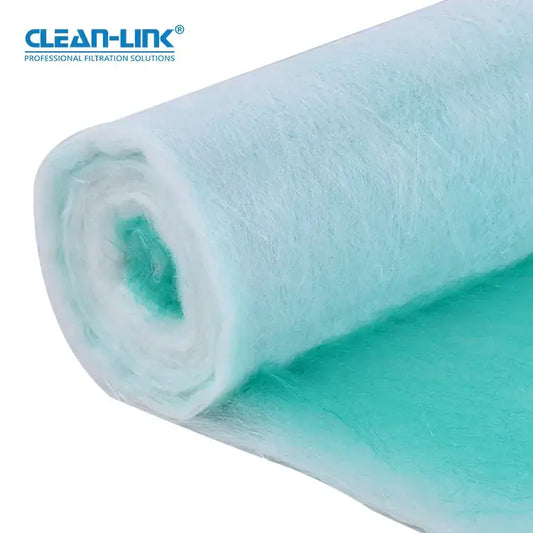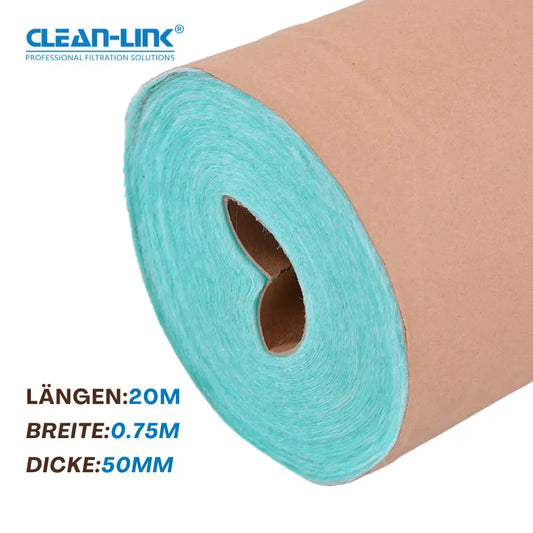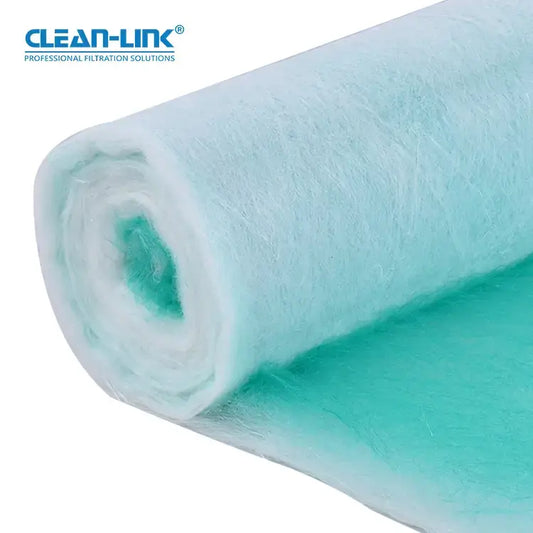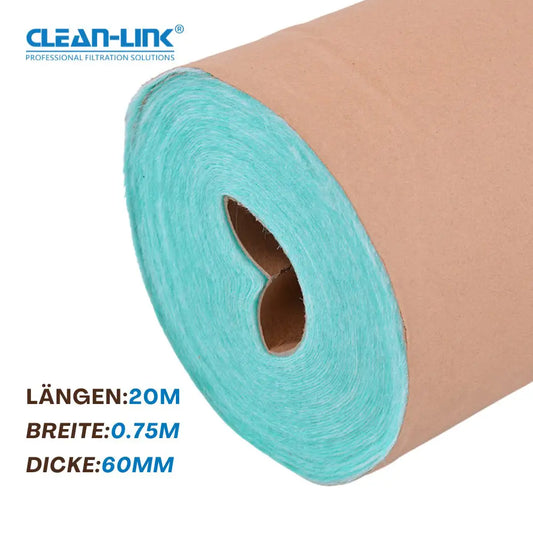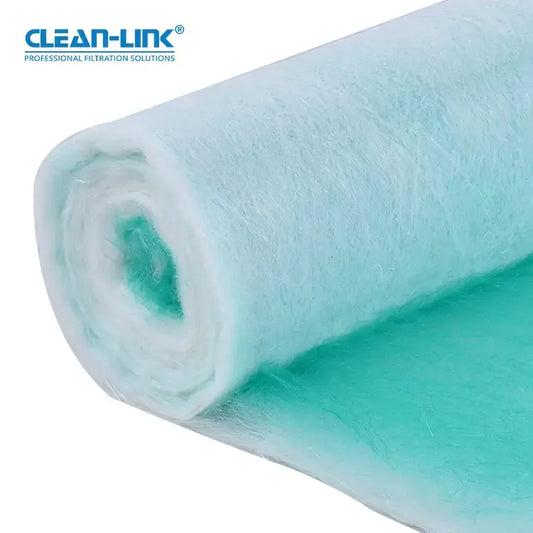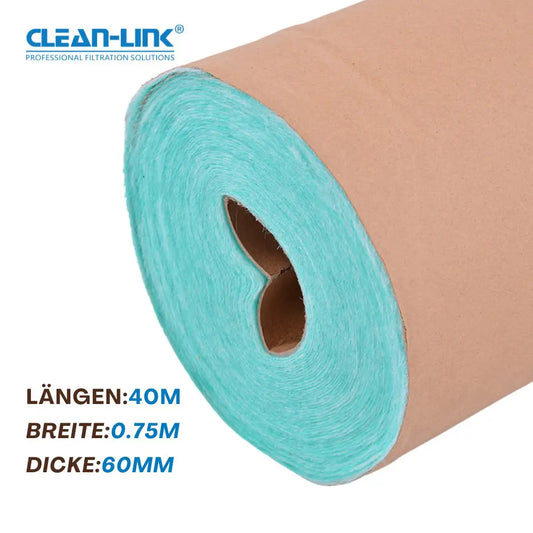The filtration mechanism of the air filter has its own characteristics and application scenarios, mainly including mechanical capture, inertia collision, direct interception, brown proliferation, static electromagnetic absorption, and electrostatic resident filter mechanism.The following is a comparative analysis of these mechanisms, covering their working principles, advantages, disadvantages and best-suited application scenarios:
Main mechanisms of traditional filtration technology
1.Separate filtering mechanism
Screening is a method of filtration based on physical interception mechanism, mainly used in particle separation.This method of filtering relies on the size of the perforation of the filter medium (usually the material of a mesh or porous structure) to intercept particles larger than perforations, allowing the particles smaller than them to pass through.The following are the basic principles of filtration:
1) Filter medium:
The filter medium used for filtering usually includes a mesh, mesh or other material with a fixed hole structure.The size of the hole in these materials determines the smallest particle size that can be intercepted.
2) Particle size interception:
When a gas or liquid that contains solid particles flows through a filter medium, particles larger than the filter medium perimeter are physically blocked in the surface or internal structure.These particles are captured and separated because they cannot pass through the holes in the filter medium.
3) Fluidity and Resistance:
The screening effect is influenced by the combination of medium perforation and fluid flow rate.Smaller holes can improve capture efficiency, but also increase the resistance of fluid through the filter medium, affecting flow speed and filtration efficiency.
4) Application field:
Screening filter is widely used in water treatment, air purification, chemical production and other fields.For example, in water treatment, thicker mesh is used to remove large particle impurities; in air purification, fine mesh can be used to capture larger dust particles, etc.
The advantages of screening are simple structure, easy to maintain and low cost, but it usually only removes larger particles effectively and is less efficient for smaller particles.Therefore, it is often necessary to use it in combination with other filtration techniques (such as adhesion, static adsorption, etc.) to a more comprehensive purification effect.
2.Inertia collision filtering mechanism
Inertia collision filtration mechanism is an effective air filtration technique that is mainly used to capture larger particles.This mechanism uses the inertia of the particle itself to capture it.The following are the basic principles of inertial collision filtering mechanism:
1) Changes in the flow path:
When a particle-containing air flow passes through a filter medium (such as a fiber material), the air flow path changes due to the structure of the medium.Filter media are usually designed to have complex channels and obstacles that force the air flow to change direction.
2) particle inertia:
particle because of the greater mass, compared to the gas molecule, its inertiality is also greater.When the air flow suddenly changes direction, these particles, due to inertia, are often unable to keep up with the flow in time to continue moving along the original path.
3) Collision and capture:
Due to the effects of inertia, particles may collide with the surface or internal structure of the filter medium and are captured.After a collision, the particle may be attached directly to the surface of the medium, or stuck by the cracks and seams of the media structure.
4) Efficiency and particle size:
The efficiency of the inertia collision filter depends to a large extent on the size and density of the particle.Larger and heavier particles are more likely to collide with the filter medium due to inertia, so this filter mechanism is more efficient in capturing these particles.
For smaller particles, because of their smaller inertia, they are more likely to change direction with air flow, thereby reducing capture efficiency.
5) Applications:
Inertia collision filtration is commonly used in industrial emission control, air purifier and automotive and aircraft engine inlet systems, especially in cases where larger particles (such as dust, pollen, sand grains, etc.) need to be removed efficiently. In conclusion, inertial collision filtration is a mechanism that uses the inertiality of particles and the collision of the filter medium to filtration, which is very suitable for the removal of large particle matter, but for the filtering effect of small particles is poor, so it is often used in combination with other filtration techniques (such as fiber filtration and static absorption, etc.) to improve the overall filtration efficiency.
3.Direct capture filter mechanism
Direct capture filtration mechanism, also known as interception filtration, is an air filtration technique that relies mainly on physical blocking to capture particles.This filtration method is widely used to remove solid particles such as dust, pollen, bacteria, and molds from the air.Here are the basic principles of the direct capture filter mechanism:
1) The structure of the filter medium:
Direct capture filtration typically uses dense fiber material as a filter medium.These fibers are configured into multi-layer mesh or weaving structures to enlarge the surface area and provide sufficient capture space.
2) Contact of particles with fibers:
When the air flow containing particles passes through the filter medium, the solid particles in the airflow come into direct contact with the fiber material due to their size, shape or due to changes in air flow speed.This contact is physical, and the particles are blocked directly by the fiber and cannot be passed through.
3) Capture mechanisms:
Once the particle comes into contact with the fiber, it gets stuck in the gap between the fibers or adheres to the surface of the fibre.The mechanism of capture can be a purely physical impediment, or it can be due to tiny adhesive forces (such as static attraction) between particles and fibers.
4) Efficiency and particle characteristics:
The efficiency of direct capture depends on a number of factors, including particle size, density, fiber layout and density and air flow speed and direction.In general, the larger the particle, the more likely it is to be caught directly.Close arrangement of fibers can increase the chances of capturing small particles.
5) Scope of application:
This filtration technology is widely used in residential and commercial air purifiers, filtration equipment in HVAC systems, industrial emission treatment, and removal of bacteria and viruses in medical equipment. Direct filtering capture is simple and effective, especially for the capture of larger particles.In order to enhance the filtration effect on small particles, direct capture filtration is often used in combination with other filtration techniques, such as inertial collision filtration or static filtration.This enables the full use of the advantages of the various mechanisms to a more comprehensive air purification effect.
4.Brown spread filtering mechanism
Brown diffusion filtration mechanisms are an important component of air filtration technology, especially when capturing very fine particles (such as smoke, bacteria and viruses).This mechanism uses the random movement of gas molecules (Brown movement) to increase the probability of contact between the tiny particles and the filter medium, thereby improving filtration efficiency.Here is the detailed principle of the Brown diffusion filter mechanism:
1) Brown Movement:
Brown movement refers to the random movement of small particles in gas or liquid caused by molecular collisions.This movement causes the particles to show seemingly irregular beating behavior in the fluid.
2) Interaction of particles and fibers:
In air filtration, when air flows containing fine particles pass through the fiber material, these Brown-driven particles move randomly and collide with the fibre surface.This collision increases the chance of the particle being captured by the fiber.
3) The structure of the filter medium:
Filter media suitable for the use of Brown diffusion mechanisms usually have very thin fibers and a tight mesh structure, which helps to increase the chance of particle contact with fibers.A typical example of this is the HEPA filter, which uses ultra-thin fibers to increase interaction with tiny particles.
4) Efficiency factors:
Brown diffusion filtration efficiency is influenced by a variety of factors, including particle size, air flow speed, density and diameter of fibers.In general, Brown proliferation is the dominant capture mechanism for particles less than 0.1 micrometers in size; for larger particles, other mechanisms (such as direct capture and permeable collision) may be more effective.
5)Application areas:
Brown diffusion filtration mechanisms are very useful in situations that require extremely high air purification standards, such as operating rooms, cleaning rooms, efficient air purifiers, etc. These applications often require the removal of ultra-small particles to ensure air quality. In general, Brown diffusion filtration is a mechanism that is effective against very small particles, increasing the efficiency of capturing them by using random movements of the particles to increase their contact with the filter medium.This filtration mechanism is often used in combination with other filtration techniques, such as mechanical capture and static absorption, to comprehensive filtration of particles of different sizes.
Ⅱ.Application analysis of high-voltage static mechanisms
High-voltage static mechanism is a technology widely used in air filtration and purification, which uses electricity to capture and remove particles from the air.This technique is also known as static dust removal or static sedimentation.The following are the basic principles and applications of high-voltage static mechanism:
①Principles
1) Injection of charge:
In high-voltage static filtering systems, the air first passes through a charged area, in which the high voltage electrodes inject a charge into the particles that pass through.These electrodes are usually made of metal, which produces sufficient electrical field strength to ionize the air, thus transferring the charge to the particles.
2) Electrical field role:
The electrically charged particles enter the area of an electrically powered dust-gathering plate.These dust collectors are set to have the opposite charge of the electrode, thus attracting electrically transmitted particles.Due to the attraction between charges, the particles will be firmly absorbed on the dust collector board.
3) Particle capture:
Once the particles are captured by the dust collector, they are removed from the air flow.This process is very effective in removing extremely fine particles, including smoke, dust and pollen.
4) Cleaning and maintenance:
To maintain the filtration efficiency of the system, dust collectors need to be cleaned regularly to remove accumulated particles.This can usually be done by mechanical vibration, anti-blowing gas or manual cleaning.
②Applications
1) Industrial emission control:
High-voltage static filtration technology is commonly used in industrial applications, especially in the processing of emissions of large quantities of high-temperature or harmful particles, such as fumes in power plants, cement plants and steel plants.
2) Domestic and commercial air purifiers:
The use of static filtration technology in air purifiers can effectively remove pollutants such as smoke, dust and pollen from indoor air and improve air quality.
3) Car exhaust purification:
Electrostatic filtration technology may also be used in vehicle exhaust treatment systems to reduce particulate emissions.
③Pros and Cons
Advantages: High-voltage static mechanisms efficiently remove very small particles, and the operating cost of the system is relatively low, without the need for frequent replacement of the filter material.
Disadvantages: Static filtering equipment requires high voltage operation, which can produce by-products such as ozone, with potential effects on the human body and the environment.At the same time, the maintenance costs are higher, especially in applications dealing with high particle loads, cleaning and maintenance of dust collectors are especially important. The high-voltage static mechanism provides a very efficient method of particle capture through the effective use of electrical charge.The design and use of such systems requires consideration of their environmental impact and operating costs to ensure both effective and safe air purification.
Ⅲ.Electrostatic residual filter
The Electret Filter Mechanism is a technology that is widely used in the field of air filtration, especially in the manufacture of high efficiency and low pressure drop filters.This filter uses static power to capture particles in the air, enhancing filtration efficiency without significantly increasing wind resistance.The following is the basic principle of the electrostatic resident filter mechanism:
①Principles
1) Preparation of resident bodies:
The resident filter material is produced through a special process, which usually involves the permanent embedding of electrical charges (positive or negative charges) into the polymer fiber.This can be achieved in a variety of ways, including electromagnetic discharge, trichloroethylene treatment or other charge injection techniques.
2) The role of the electric charge:
The fibers of the resident material are permanently charged to attract and capture the particles with the opposite charge.When these particles pass through the filter material, they are absorbed onto the fiber due to the action of static power.
3) Particle capture mechanism:
The resident filter not only uses mechanical interception and inertia to capture particles, but also significantly improves the capture of the very fine particles by increasing the electrostatic absorption force.This allows even tiny particles such as smoke, bacteria and viruses to be effectively captured.
4) Filtering efficiency and air flow resistance:
Electrostatic residual filter materials usually have lower air flow resistance, which means that air circulation is not too much hampered whileining high filtration efficiency.This is because electrostatic absorption allows for more open, more airy fibrous structures.
②Applications
1) Air purifier: Residual filter is widely used in domestic and commercial air purifiers, especially in situations where it is necessary to efficiently filter small particles without increasing the fan load.
2) Medical protection: used in the manufacture of N95 respirators and other protective masks, these masks require effective filtration of bacteria and viruses whileining good respiratory permeability.
3) HVAC system:used in heating, ventilation and air conditioning systems to improve indoor air quality and effectively remove dust, pollen and other allergens.
Advantages:High filtration efficiency, low air flow resistance, continuous capture of small particles.
Note: Although the static properties of the resident filter are very strong, it may be weakened if used in high humidity environments.In addition, the particles accumulated on the filter may also decrease static absorption over time. Overall, static polar filter technology provides an efficient and energy-efficient air purification solution, especially suitable for applications that need to consider both filtration efficiency and air resistance.Through the use of static electricity, this technology significantly enhances the capture capacity of the filter medium for small particles, which is an important advance in the field of air purification.

